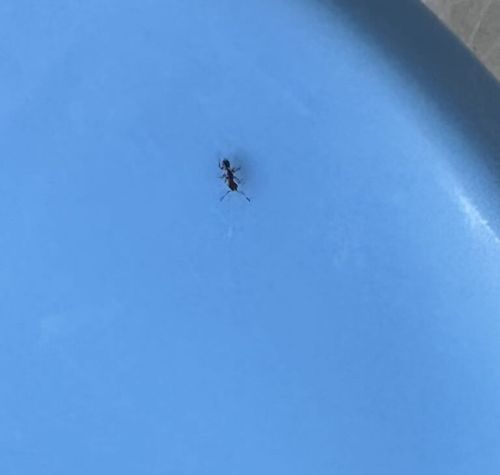Ant
Scientific Name: Formicidae
Order & Family: Hymenoptera, Formicidae
Size: Worker ants can range from 1 mm to 30 mm (0.04 to 1.2 inches) in length, depending on the species.

Natural Habitat
Ants are found in nearly all terrestrial habitats, including forests, grasslands, deserts, urban areas, and even some aquatic environments near freshwater sources. They build nests in soil, wood, under rocks, or in plant structures.
Diet & Feeding
Ants are omnivores with diverse diets. They feed on nectar, seeds, fungi, other insects (both living and dead), honeydew excreted by aphids, and food scraps found in human environments.
Behavior Patterns
Ants are highly social insects living in colonies that can range from a few dozen to millions of individuals. They exhibit complex social behaviors including division of labor, communication through pheromones, and collective foraging. They undergo complete metamorphosis (egg, larva, pupa, adult).
Risks & Benefits
Risks include property damage from tunneling, contamination of food, and stings in some species (e.g., fire ants). Benefits include pest control (predation on other insects), soil aeration and nutrient cycling, and seed dispersal for plants.
Identified on: 11/9/2025